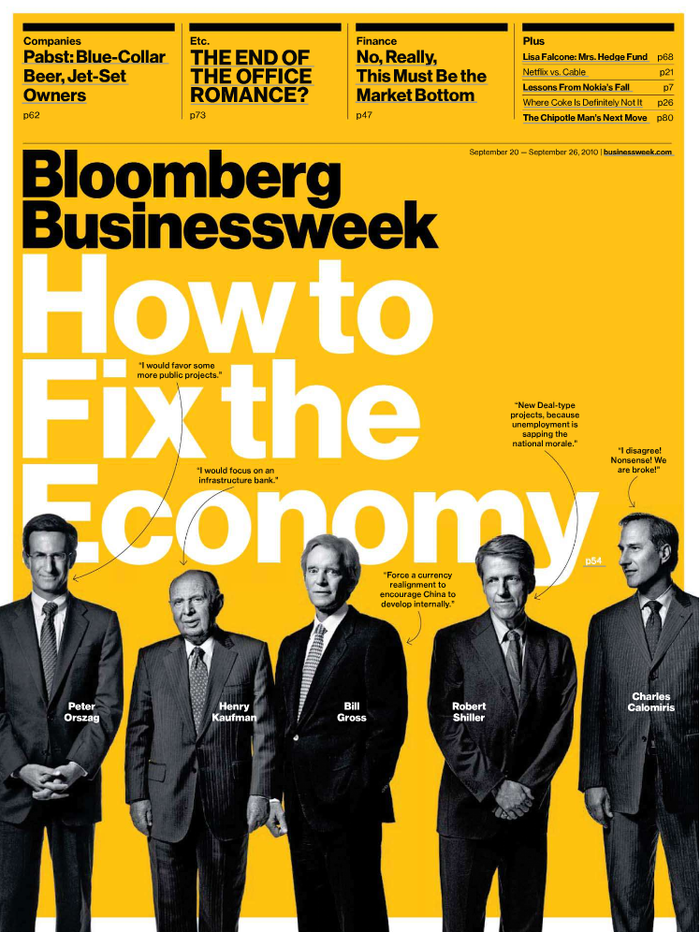Best Investment Magazines

Investment market conditions are continuously changing, and during these hectic times, with world powers battling over trade, it is more important than ever to be up to speed. You must be updated and on top of market changes to anticipate your next investing move.
With this in mind, here are the best investment magazines you can tune into to help you gain new insights for the betterment of your portfolio.
Barron’s

Buy a copy now from AMAZON.COM
What It Offers
One of the most respected magazines for investing and finance is Barron’s. This magazine solely focuses on finance and investment, unlike others, which also touch on world news and general business. It publishes articles every week and presents endless investing ideas.
Among its best features is its ability to showcase in-depth analysis, relevant graphs and charts, and other information that one might need to make an informed decision. Each issue also has a section containing a weekly profile of a particular successful investment manager, a Q&A portion with an asset manager, editorial commentary, and an interview with a CEO.
Every week, the magazine also delves deeply into a particular industry or company and analyzes how its actions affect the financial markets. It features stories on how these businesses have impacted the market on a positive and negative level.
Barron’s also contains a section known as “Market Week.” The Market Week section presents a news-driven analysis of the money market based on the previous week’s performance. It also lists the closing prices of ETFs, the most active stocks, bonds, and mutual funds.
You may purchase this magazine for only $99 for 30 weeks or $179 for a whole-year subscription.
Pros And Cons
Pros
- It is comprehensive and dedicated to only one single topic – the financial markets.
- It gives various perspectives on which investment to buy, sell or hold.
- Its website also offers quick links to information about different companies and their corresponding stock market performance.
Cons
- Barron’s target audience is institutional investors, senior managers, finance professionals, and individual expert investors. Hence, its writing approach might be a little bit technical for beginners and can be a dry read.
- Its articles are incredibly focused on investing. As a result, you still have to pair it with a business news magazine to stay fully informed.
- Barron’s does not offer an Android app.
Must-Read Articles
- A Bull Market With Long Legs: Andy Sieg, the leader of Merrill Lynch Wealth Management, shared his perspective on the forecasted 50-year bull market cycle. The catalysts that will boost this performance include the rise of the millennial generation, the continuous presence and growth of the middle class in emerging markets, and the undeniable productivity of baby boomers.
- New Front In The Robo War: More and more companies are now investing in robo advisors, and the wealth management industry is continuously innovating its software to ensure that it provides comprehensive and successful financial planning advice to its clients.
The Economist

Buy a copy now from AMAZON.COM
What It Offers
The Economist is probably one of the most prestigious and longest-running economic publications in the world. Founded in 1843, it prides itself on reporting politically neutral, comprehensive, and up-to-date content. It shows the ins and outs of market movements, business operations, and foreign and domestic politics, which will affect the investments of shareholders.
The Economist also provides a brief perspective on the short and long takes on the industry and business news throughout the week. It does not only focus on US-centric financial news but the global landscape as a whole. The magazine emphasizes the direct link between economic movements and politics, which may be useful for trading investors inside and outside the United States.
In addition to finance and investment news, the Economist features and analyzes the latest technological innovations worldwide.
Right now, you can get the print issues at $45 per month while the Kindle edition for $13 per month. If you opt to sign up for both print and digital publication, you will also get the benefit of the limited edition of The Economist Espresso – a daily morning briefing from the editors of the magazine.
Pros And Cons
Pros
- Publishes insights and predictions for the next years
- They provide YouTube bite-sized videos if you don’t have time to read their content
Cons
- If you’re already familiar with finance and business jargon, the terms here might be too technical for you.
- The magazine contains few pictures, making it a dull read
- There are comments made by previous readers that it takes too long to unsubscribe and that customer service is quite poor
Must-Read Articles
- Bringing Investment To Poor Places: The article revolved around Census Tract Three, America’s new favorite policy for giving opportunities to invest in deprived areas. Basically, the system tempts these businessmen to place their money into poor places that have generous tax incentives.
- The Trade War Is Leading Some Firms To Crimp Investment: This write-up tackled the ongoing trade war between two superpowers, the United States and China. It also showed how these issues affect the financial spreadsheet of investments around the world.
Investor’s Business Daily

Buy a copy now from AMAZON.COM
What It Offers
Investor’s Business Daily’s main target is investors who have already mastered the ins and outs of the financial market. What’s unique about this magazine is that its team of market analysts not only presents the daily fluctuations of the domestic market but also offers their analysis, predictions, and commentaries on how investors should interpret these shifting signals.
As its name implies, Investor’s Business Daily has been a physical publication for decades, and copies are sent to readers’ doorsteps every day. However, with the evolution of technology, management has decided to focus more on the magazine’s daily digital distribution. Readers can opt to have a weekly physical copy of their subscription sent to their homes, which contains additional editorials, stories, and analyses.
Pros And Cons
Pros
- IBD provides rare data which can be used to forecast the movement of the stock market.
- There is a detailed stock table for companies and industries, which can help the reader make sound investment decisions.
Cons
- The pop-up ads on the website can be very distracting and annoying.
- It does not have a political and editorial section, which is often helpful when conducting financial analyses of stock market performance.
Must-Read Articles
- Investing Strategies: How To Find Top Tech Stocks In New Market Rally: This article features Burke Financial Strategy and its insights regarding the market volatility of tech stocks around the world. Burke Financial Strategy also shared its perspective on the perfect timing of a portion of the business of tech heavyweights like Netflix, Microsoft, Apple, Cisco, and Plus.
- Five Ways To Spot The Base On Base, A Bullish Pattern In Growth Stocks: With a more likely consistent increasing performance in the stock market, it has more likely formed a bullish chart pattern, base on base. This article will explore the five characteristics that will guide you in identifying the pattern.
Kiplinger’s

Buy a copy now from AMAZON.COM
What It Offers
If you are looking for a more practical and personal approach in finance and investment, Kiplinger’s Personal Finance may be the best for you. It offers various write-ups on exciting topics like:
- How to be smart with your money every day
- Buying a home
- Handling student loan debt
- Saving for retirement
- Investing in mutual funds
- Managing expenses in school
One of Kiplinger’s best practices is to select various investment strategies and compare their outcomes. It then explains where those picks went wrong and how they can be avoided in the future.
This magazine is published monthly, but the team also releases weekly newsletters. These newsletters support financial planning from early age to seniors. They call these the “Kiplinger Letter” and the “Kiplinger Tax Letter,” which assist readers in legally and properly handling their investments and taxes. The company also offers the “Kiplinger Retirement Report,” targeted towards its older audience.
Pros And Cons
Pros
- It recently unveiled a new email service called “Kiplinger’s Alerts.” This service aims to deliver essential and actionable information regarding finance and investment to your mobile device.
- Kiplinger is honest about admitting that it picked its stocks wrong. However, it also makes sure to give advice on how to avoid these shortcomings.
- The writing style is easy to follow and understand.
Cons
- It is a good magazine for personal financial planning, but not if you are trying to invest.
- The target audience is focused on individuals who are saving up for retirement and doing long-term planning; younger generations may struggle with the advice due to its longer-term strategies.
- The topics are mainly focused on mutual funds, with little focus on the stock market or real estate investing.
Must-Read Articles
- Building A Better 401(k): Not everyone has stashed some money on their 401(k) or employer-sponsored retirement investment plan. And if they have, they still have to learn how to transform their aggressive approach to a more conservative one while nearing retirement. This article will revolve around the basics of diversifying your 401(k) portfolio.
- 8 Ways To Boost Your Credit Score: Your credit score won’t stay on the good path forever. There might be a time that it will suddenly go south and sag eventually. In this write-up, they will be exploring the best habits for you to incorporate into your daily life so you can have a credit score of 700 or higher.
Bloomberg Businessweek

Buy a copy now from AMAZON.COM
What It Offers
Bloomberg Business targets politically savvy financial investors who are curious and interested in what’s happening in the political climate around the world. The magazine provides information on the latest geo-political issues, which might affect the movement of the money market. The magazine does a solid job integrating global news headlines with the financial market and then analyzing the impacts of each and how it can impact your investments.
It also offers a section that presents the latest mergers and acquisitions (M&A) and large critical company changes so investors can stay up to speed on critical industry changes.
The company publishes Bloomberg Businessweek every week, and it can be obtained through three mediums: a physical copy, a tablet-accessible version, or a web-based subscription. The print edition costs $4 per month, while the Kindle edition is $59.99 per year.
Pros And Cons
Pros
- It accurately presents the effects of social and political changes to the movement in the money market.
- There are various ways to subscribe and receive their regular publication
- The articles are comprehensive, accurate, and up-to-date.
- The magazine excellently presents and analyzes the graphs, charts, and infographics to break up the text.
Cons
- We were not impressed with the Kindle version’s index display on the screen.
- Customer service needs work.
Must-Read Articles
- A Guide To Investing From The Waltons, The Richest Family On The Planet: The Waltons, owner of the famous Walmart retail chain, share how diversifying their portfolio can lead to a successful business. They made investments in the energy and water sector, a high-end British cycling brand, and an assortment of restaurants.
- It’s Been 40 Years Since Our Cover Story Declared ‘The Death Of Equities’: Last August 13, 1979, Bloomberg Businessweek published an article with a headline entitled ‘The Death of Equities: How Inflation is Destroying the Stock Market.’ Three years after that, the money market hit its rock bottom. This article tackles the ins and outs of the remarkable resurgence of the stock market after that challenge.
Finals Words
There are many other investment magazines out there that can be incredibly valuable as you grow your investment portfolio and learn the markets. However, in this day of constant distractions and limited time, this compilation provides the best all-around list we’ve found and used. Selecting which from this list is best is personal based on investment goals, financial market knowledge and acumen, preferred reading style, and even the reader’s age.
Since many of these publications provide either a free trial or some free resources, we suggest trying them first before committing to ensure you select the right one for you.